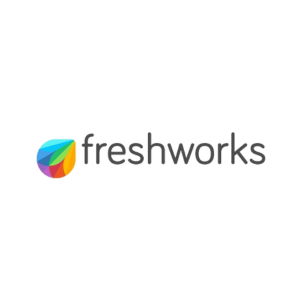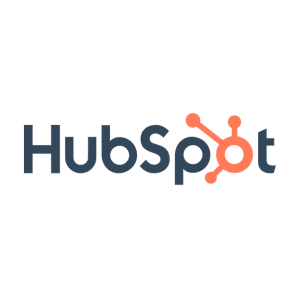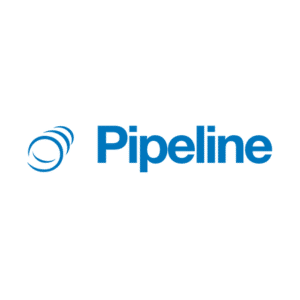Is your business struggling to find its target audience and cater to these individuals effectively? Or perhaps you’re struggling to convert leads to paying customers.
Either way, these problems are common for small businesses because they don’t have a way to categorize their leads!
Hi, my name is AJ! After selling my company for multiple seven figures, I made it my mission to help entrepreneurs at all levels build a successful business!
Before I found success, my business struggled to utilize MQL and SQL effectively.
Keep reading if you’re ready to find the best leads and secure more sales! I’m uncovering everything you need to know about SQLs and MQLs!
Key Takeaways
-
MQLs and SQLs are different types of leads that differ mainly in their readiness to convert to a sale. -
MQLs and SQLs play a key role in the sales funnel. Understanding the difference can help companies tailor their marketing and sales strategies. -
Efficient communication systems between marketing and sales is crucial to differentiate between MQLs and SQLs. -
Converting MQLs to SQLs is critical to driving growth. Tracking and refining strategies can help optimize lead generation.
Related Reading: Best CRM for Small Businesses
SBB Featured Partners
What is a Marketing Qualified Lead (MQL)?
A marketing qualified lead is a lead your marketing team has designated as most likely to buy your products or services compared to other prospective customers.
How do marketing teams determine MQLs?
Typically, through the following actions a customer takes:
- Which CTAs they clicked on
- The website pages they visited
- The email marketing offers they utilized
- Their interactions with social media posts
What is a Sales Qualified Lead (SQL)?
A sales qualified lead is a prospective buyer ready to talk to a company’s sales team to learn more about the product or service.
Sales qualified leads have expressed interest in a business’s products or services, indicating they’re ready to go to the next stage in the sales funnel.
Also, SQLs are individuals whom a business’s marketing team has researched and handed on to the sales team.
/* widget: Block Quote Slider */
.blox-side-image-blockquote .slick-prev{
background-color:#ffffff;
position:absolute;
left:30px;
bottom:35px;
cursor:pointer;
font-size:24px;
}
.blox-side-image-blockquote .slick-prev:after{
font-family: “Font Awesome 5 Free”;
font-weight: 900;
font-style: normal;
content:’\f104′;
display:block;
font-size:24px;
position:absolute;
left:50%;
top:0px;
margin-left:-6px;
margin-top:-1px;
}
.blox-side-image-blockquote .slick-next{
background-color:#ffffff;
position:absolute;
left:72px;
bottom:35px;
cursor:pointer;
}
.blox-side-image-blockquote .slick-next:after{
font-family: “Font Awesome 5 Free”;
font-weight: 900;
font-style: normal;
content:’\f105′;
display:block;
font-size:24px;
position:absolute;
left:50%;
top:0px;
margin-left:-3px;
margin-top:-1px;
}
– AJ Silber
MQL vs. SQL: What’s the Difference?
The difference between MQL vs. SQL is subtle but essential to understand when categorizing leads and prospective buyers.
Marketing-qualified leads are people who have interacted with your brand in some way.
If your marketing and sales teams nurture an MQL correctly, they could become a paying customer.
In comparison, an SQL is someone your teams have researched and vetted, so much so that your marketing department determines they’re ready to talk to a sales rep.
An MQL becomes an SQL once they’re “ready” to talk to a sales agent.
The main difference is the intent to buy.
MQLs merely express interest in your brand, like commenting on a social media post.
SQLs interact with your brand thoroughly and match the criteria for your target audience.
SQLs have a higher intent to purchase products or services.
MQL Examples
Let’s look at a few examples to better understand what an MQL looks like in the real world.
Newsletter Subscribers
Assume a person signs up for your brand’s monthly newsletter.
This act indicates an initial interest in your brand, thus making the individual an MQL.
They have yet to express purchasing intent but are curious enough about your brand to want regular updates.
Content Downloaders
Let’s say a visitor to your website downloads a free eBook.
Downloading content is another form of an MQL.
The individual is showing interest by taking the time to read your long-form content, indicating they’re considering your products or services.
Webinar Attendees
If a person registers for and attends one of your webinars, it’s safe to label them as an MQL.
Their willingness to learn more about your industry, products, or services showcases a higher level of interest, potentially leading them down the sales funnel.
SQL Examples
Here are three examples of SQLs!
Request for Pricing Information
Suppose a website visitor fills out a form asking for detailed pricing information about your product or service.
Requesting pricing information shows a firm intention to move them from MQL to SQL.
Product Demo Requesters
Imagine a prospect requesting a live demonstration of your product.
This action signifies a deep interest in your products or services, suggesting the lead is ready to progress further down the sales funnel.
Such interactions typically categorize the individual as an SQL, demonstrating their readiness to engage with your sales team.
Free Trial Users
If a visitor signs up for a free trial of your product or service, you can safely label them as an SQL.
This lead behavior of trying your product shows interest and willingness to invest time and money into what your company offers.
The leads’ experience with the trial could be the deciding factor in their purchasing decision.
Benefits of Differentiating MQL Vs. SQL
The primary benefit of distinguishing MQLs and SQLs is that it saves your sales team a lot of time!
For instance, when your sales and marketing teams determine and categorize SQLs correctly, your agents only spend time selling to the right audience at the right point.
Also, differentiating MQLs and SQLs ensures your sales reps have more meaningful conversations.
Why? They’re talking with qualified prospects rather than people who don’t need or want your products or services.
Lastly, categorizing your leads the right way gives your marketing and sales teams insight into the working strategies.
For instance, differentiating SQLs and MQLs helps your teams determine the following things:
- The strategies that bring leads in
- How likely lead to convert to paying customers
- How frequently your sales team closes deals
- Whether or not your team is having meaningful conversations with customers
Transitioning a Lead from MQL to SQL
What actions indicate an MQL is ready to transition to an SQL?
Here are some things to look for and strategies to help you determine this!
Lead Score
Moving a prospective customer from an MQL to an SQL starts with leading scoring.
Lead scoring assigns values or points to each lead your marketing team generates.
Lead scoring can be based on various attributes, including the following:
- Professional information
- How often a customer engages with your website or social media platforms
- Email marketing data
- Demographics
Lead scoring saves sales teams time and ensures they only engage with customers who actually want to talk about the company’s products or services.
How many points should a lead have before you transition them?
The answer depends on your company! Keep in mind that you can change the point threshold as your team determines the best value.
Lead Behavior
Sales and marketing teams track the behaviors of each lead to determine if they’re ready to transition to an SQL.
What behaviors determine when an MQL is ready to become an SQL? That depends on your company!
Still, some examples of behaviors your company should track are:
- How many emails have a lead opened and interacted with
- Whether or not a customer books a meeting
- The way customers interact with your website
- Whether or not they added an item to their cart online
Likelihood to Buy
Leads must have a need for your products or services to become an SQL.
Additionally, these leads must have:
- The budget for your products or services
- Pain points your products or services can solve
Determining each lead’s likelihood to buy gives you a good idea of whether or not your products or services are a good fit for the individual.
/* widget: Block Quote Slider */
.blox-side-image-blockquote .slick-prev{
background-color:#ffffff;
position:absolute;
left:30px;
bottom:35px;
cursor:pointer;
font-size:24px;
}
.blox-side-image-blockquote .slick-prev:after{
font-family: “Font Awesome 5 Free”;
font-weight: 900;
font-style: normal;
content:’\f104′;
display:block;
font-size:24px;
position:absolute;
left:50%;
top:0px;
margin-left:-6px;
margin-top:-1px;
}
.blox-side-image-blockquote .slick-next{
background-color:#ffffff;
position:absolute;
left:72px;
bottom:35px;
cursor:pointer;
}
.blox-side-image-blockquote .slick-next:after{
font-family: “Font Awesome 5 Free”;
font-weight: 900;
font-style: normal;
content:’\f105′;
display:block;
font-size:24px;
position:absolute;
left:50%;
top:0px;
margin-left:-3px;
margin-top:-1px;
}
– AJ Silber
MQL to SQL Example
At first, it can be challenging for sales and marketing teams to determine MQLs from SQLs.
Below, I’ve laid out a simple MQL to SQL example for your company to follow!
Step 1: Lead Enters the Organization
The first step is getting a lead under your company’s radar.
In this example, someone signs up for your brand’s newsletter.
Your newsletter grants prospective customers exclusive deals, company information, and more.
Step 2: Lead is Reviewed for MQL Status
At this point, your marketing and sales teams review the lead for MQL status.
Because the individual in this example signed up for the newsletter, it’s safe to say they have started the buyer’s journey and are ready to learn more about your brand.
Your team determines this lead’s sales readiness is higher than others, and they pursue more marketing efforts.
Step 3: MQL is Monitored and Engaged With
Your marketing team continues to monitor the MQL and how they interact with your brand.
For instance, your team implements lead nurturing efforts like email marketing to see if customers take advantage of certain discounts and clicks on the incorporated links.
Additionally, your marketing departments use a customer relationship management (CRM) system to monitor social media activity and how they interact with your brand.
Step 4: Sales Team Takes Over After X Touchpoints
After a certain number of touchpoints, you can pass leads to your sales department.
Because the prospect in this example signed up for emails and interacted with the brand multiple times, they are determined to be sales qualified.
At this point, the marketing and sales teams communicate about effective sales efforts and messages that resonate most with this potential customer.
Then, the sales department’s goal is to guide the lead through the sales funnel to eventually make a sale!
Benefits of Lead Scoring for SQL & MQL
How important is lead scoring for MQL and SQL purposes?
Here are three reasons to implement a lead score threshold into your sales process!
Increased Sales Efficiency
Lead scoring allows your sales department to prioritize their efforts on the most promising leads.
And the most promising leads are those most likely to convert into paying customers.
Instead of wasting time on leads that are not ready to buy, your sales agents can focus on engaging with SQLs.
As a result, there are more productive conversations and potentially higher sales conversions.
Improved Marketing Strategies
By using lead scoring to differentiate between MQLs and SQLs, your marketing department can gain valuable insights about which marketing strategies are most effective in attracting high-quality leads.
Your marketing and sales departments can use the information to revise and improve future marketing campaigns, ensuring they are targeted at the right audience and are more likely to generate qualified leads.
Enhanced Lead Nurturing
Lead scoring is also beneficial for nurturing MQLs towards becoming SQLs.
By understanding where a lead is in the buyer’s journey, your marketing team can provide them with more personalized and relevant content.
As a result, this helps guide leads on their purchasing journey.
Regular engagement and providing the right content at the right time make MQLs more likely to transition into SQLs!
Typical MQL to SQL Conversion Rate
According to sales and marketing data, the average MQL to SWL conversion rate is about 13%.
This conversion rate means that only 13% of individuals who interacted with a brand ended up purchasing the products or services.
Further, this data indicates that only 6% of the SQLs result in actual deals.
This data indicates MQL and SQL’s importance and determines the right factors to categorize each lead.
Also, because the conversion rate is so slim, utilizing the right channels to attract more leads is essential.
Some of the best conversion channels include the following:
- Employee referrals
- Customer referrals
- Webinars
- Social media
- Websites
Final Thoughts on MQL and SQL
MQL and SQL definitions vary slightly, but each lead differs greatly from its counterpart.
MQLs have interacted with your business in some way, shape, or form.
On the other hand, SQLs are a sales-ready lead, meaning they’re ready to purchase something.
Implementing lead scoring is crucial to correctly categorize leads and increase your conversion rate.
What does your business’s qualification process look like? Let us know in the comments section below!
And good luck developing a lead handoff process and overall sales strategy for SQLs!
The post MQL Vs. SQL Explained for SMB Owners appeared first on Small Business Bonfire.
The post originally appeared on following source : Source link


